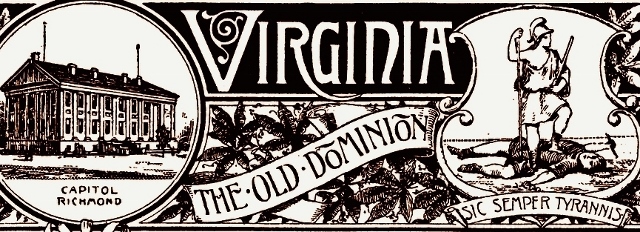How Virginia’s State Constitution Would Impact Construction of the United States Constitution
LISTEN ON SOUNDCLOUD:
On June 25, 1788, “Old Dominion” as Virginia is known, became the tenth of the thirteen original states to ratify the U.S. Constitution, admitting it to the Union June 25, 1788. The Virginia State Constitution in current use was adopted in 1971, with the original Virginia Constitution adopted in 1776. Despite the U.S. Constitution requiring that only 9 of the 13 colonies ratify it for it to become effective, given the importance of Virginia to the new nation, had it voted down the U.S. Constitution, the future of the United States might well be in doubt.
The nickname, “Old Dominion,” likely derives from Virginia being the first of the overseas dominions of the kings and queens of England. Virginia also is known as the Mother of Presidents and the Mother of States. Eight Virginia natives have held the presidency, including four of the first five- George Washington, Thomas Jefferson, James Madison, and James Monroe.
On the third day of the fall session of the Virginia legislature in 1787, the Virginia House approved a convention to consider ratification of the proposed United States Constitution. The Virginia legislature strongly debated whether to adopt or reject the document as it was submitted, or to condition any approval upon certain amendments and revisions. John Marshall proposed a resolution that won the day, “that a Convention should be called and that the new Constitution should be laid before them for their free and ample discussion.” The Senate followed slowly, and on January 8, 1788, a law passed calling for a state convention.
The Virginia Convention of 1788 commenced on June 2, 1788. The delegates arriving in Richmond believed that the fate of the Constitution hung in the balance with how Virginia decided. Even so, upon arrival at the Convention, many members had not seen the Constitution until they arrived at the Virginia Convention. While the Virginia convention ensued, New Hampshire became the ninth state to ratify the Constitution and it became effective. At the time of the Virginia Convention, a healthy majority of Virginians were opposed to the concept of a strong national government contemplated by the Constitution and the Virginia Convention began with that view prevalent amongst the delegates. The Nation was watching closely how the important Commonwealth of Virginia decided, for “she also was the most important State in the Confederation in population and, at that time, in resources.”
Delegates included a veritable “who’s who” of delegates, including John Marshall, along with Governor Edmund Randolph, James Madison, George Mason, James Monroe, and Patrick Henry. On June 24, 1788, Delegate George Wythe moved the Virginia Convention to ratify the Constitution. Henry arose for a final great speech of his life, arguing against ratification without amendments. The proposal to add amendments, many of which became the Bill of Rights, failed to be a condition of ratification, but would prove to be valuable guidance when Congress met in 1789. After further debate, on June 26, 1788, the Virginia Convention voted to ratify the Constitution by the slim margin of 89-79. This slim margin would not have been possible had eight members of the Convention not voted against their constituents’ directives, and two ignored the instructions given them. Virginia effectively would be the only convention where both sides of the debate were fully vetted and discussed. The Virginia delegation argued both broad principles and minor details of the document approved in Philadelphia.
With that, the new nation could breathe easy, as its largest colony and most influential was on board. As noted, it would see four of the first five presidents hail from Virginia.
The Virginia Constitution
Before the Declaration of Independence was made, Virginia adopted its state Constitution on June 29, 1776, and its document would be of major impact when the new nation turned to creating a Constitution of its own. Mason, who had a large role in the drafting of the Constitution in Philadelphia, and who was one of three delegates still in Philadelphia in September who did not sign the Constitution, was one of the main drafters of the 1776 Virginia Constitution. The other was Madison, who is considered by many to be the Father of the Constitution for his work in connection with the Annapolis Convention, the Bill of Rights and the Constitutional Convention. Madison would take his learnings from Virginia a decade later when he helped design the United States Constitution.
The 1776 Virginia Constitution included a bicameral legislature, the governor was the executive and there was a judicial branch. In addition, the Virginia Constitution had an accompanying Virginia Declaration of Rights, which Mason mostly wrote, that guaranteed certain human rights and freedoms that would be the model for the Bill of Rights introduced at the first Congress of the new nation under the ratified United States Constitution.
Conclusion
While the ratification of Virginia was not required under the new Constitution for there to be a United States, had the vote gone the other way, the United States may have been for naught before they began. Old Dominion showed its leadership and ratified the U.S. Constitution and the rest is history.
Dan Cotter is a partner at Latimer LeVay Fyock LLC and an adjunct professor at The John Marshall Law School, where he teaches SCOTUS Judicial Biographies. His book, “The Chief Justices,” (April 2019, Twelve Tables Press), is available now. He is also a past president of The Chicago Bar Association. The article contains his opinions and is not to be attributed to anyone else.
Click Here to have the NEWEST essay in this study emailed to your inbox every day!
Click Here to view the schedule of topics in our 90 Day Study on Congress.




Join the discussion! Post your comments below.
Your feedback and insights are welcome.Feel free to contribute!